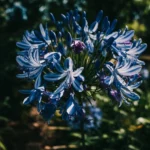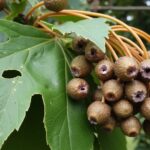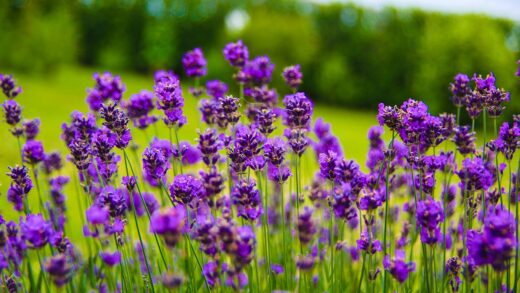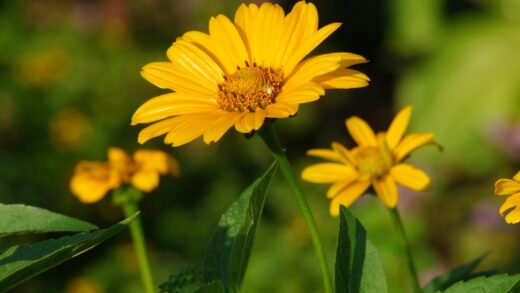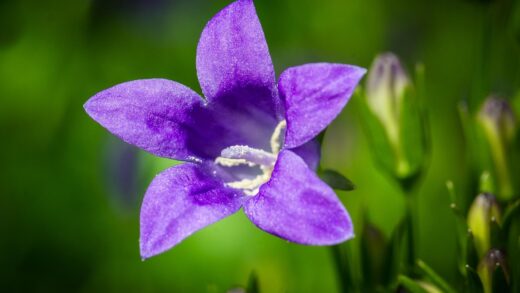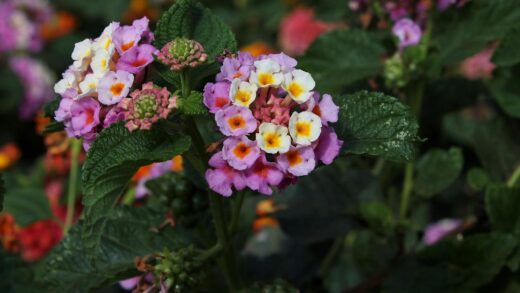Pruning and trimming are essential horticultural practices that, when applied correctly to bellflowers, can significantly enhance their appearance, promote a longer blooming period, and improve overall plant health. While the term “pruning” might evoke images of cutting back large woody shrubs, for herbaceous perennials like the bellflower, it primarily involves more delicate tasks such as deadheading, pinching, and cutting back. These techniques, though simple, can have a profound impact on the plant’s performance throughout the growing season and its successful return in the following year. A thoughtful approach to trimming allows the gardener to guide the plant’s energy, directing it towards producing more flowers and maintaining a tidy, attractive form. This chapter will detail the various methods and timings for pruning bellflowers to maximize their garden potential.
The most common and frequently performed pruning task for bellflowers is deadheading, which is the simple act of removing spent flowers. This practice serves two important purposes. Aesthetically, it keeps the plant looking neat and tidy by removing the fading, browning blossoms. More importantly, from a horticultural standpoint, deadheading prevents the plant from setting seed. The ultimate goal of a plant is to reproduce, and once it has been pollinated and begins to form seeds, its hormonal signals shift, and it will often slow down or stop producing new flowers. By removing the old flowers before they can develop seeds, the gardener effectively tricks the plant into continuing to bloom in its effort to reproduce, thus extending the flowering season considerably.
The specific method for deadheading can vary slightly depending on the growth habit of the bellflower. For species that produce single flowers on individual stems, such as the Carpathian bellflower (Campanula carpatica), the best practice is to snip off the entire stem of the faded flower at its point of origin near the base of the plant. For bellflowers that produce their blooms on tall spikes or in clusters, like the clustered bellflower (Campanula glomerata) or the peach-leaved bellflower (Campanula persicifolia), individual flowers on the spike can be pinched or snipped off as they fade. Once all the flowers on a particular spike have finished blooming, the entire flower stalk can then be cut back to the main clump of basal foliage.
Beyond deadheading, a more significant trim, often called “cutting back” or “shearing,” can be beneficial for many mat-forming or mounding bellflower varieties. After the first major flush of flowers has finished, these plants can sometimes look tired and untidy. Shearing the entire plant back by about one-third to one-half can rejuvenate it, stimulating a fresh flush of healthy new foliage and, in many cases, encouraging a second, albeit often smaller, wave of flowers later in the season. This technique is particularly effective for species like Campanula portenschlagiana and Campanula poscharskyana, helping to keep their spreading mats dense and vigorous.
The final major pruning event of the year occurs in the autumn, after the first hard frosts have caused the foliage to die back. At this point, the stems and leaves of most herbaceous perennial bellflowers can be cut back to within a few inches of the ground. This seasonal cleanup is important for garden hygiene, as it removes dead plant material that could harbor fungal spores or provide shelter for overwintering pests. This practice ensures that the plant enters the new growing season with a clean slate, reducing the likelihood of disease and pest problems emerging in the spring.
More articles on this topic
Deadheading for prolonged blooming
The practice of deadheading is rooted in the biological imperative of the plant. A bellflower’s primary purpose, from an evolutionary perspective, is to produce seeds to ensure the next generation. The beautiful flowers are simply a means to that end, designed to attract pollinators. Once a flower is successfully pollinated, the plant’s energy is redirected from producing more flowers to the development of viable seeds. Deadheading short-circuits this process. By removing the spent flower before it can form a seed head, the gardener sends a signal to the plant that its reproductive mission has not yet been accomplished, prompting it to produce more flowers in a renewed attempt to be pollinated.
This technique is most effective on bellflower varieties that are repeat or long-season bloomers. Species such as Campanula carpatica and many of the low-growing alpine types respond particularly well to diligent deadheading, often flowering continuously from early summer until the first frosts. To be truly effective, deadheading should be done regularly, ideally every few days. Allowing a large number of seed heads to develop before taking action can signal the plant to enter its seed-maturation phase, making it more difficult to coax it back into a full flowering mode. A little attention on a regular basis yields much better results than an intensive session once a month.
The correct technique for deadheading is crucial for both the appearance of the plant and its future growth. It is not enough to simply pull off the dead petals; the entire flower head and its small stem, down to the next leaf or side shoot, should be removed. This prevents the plant from looking untidy with headless stems sticking up. Using a pair of small, sharp scissors or floral snips allows for a clean cut and precise work. For bellflowers with flower spikes, removing the entire stalk back to the basal foliage after the last flower has faded encourages the plant to produce entirely new flower stalks from the base, rather than smaller, weaker side shoots from the old stem.
While deadheading is highly beneficial for most bellflowers, there are a few situations where a gardener might choose not to do it. If the goal is to allow the plant to self-seed and naturalize in an area, then leaving the flower heads to mature and disperse their seeds is necessary. Some bellflower varieties also have attractive seed heads that can provide architectural interest in the autumn and winter garden, and also serve as a food source for seed-eating birds like finches. In these cases, the aesthetic or ecological benefits of leaving the seed heads may outweigh the benefit of a slightly extended blooming season.
More articles on this topic
Cutting back after flowering
After the initial, magnificent flush of summer blooms has passed, many perennial bellflowers can begin to look a bit worn and dishevelled. The foliage may be tired, and the overall shape of the plant can become open and untidy. This is the perfect time to perform a more substantial “haircut,” a practice known as cutting back or shearing. This involves cutting the entire plant back significantly, typically by about half. This seemingly drastic action is actually a powerful tool for rejuvenation, encouraging the plant to put on a fresh flush of dense, healthy foliage and often stimulating a second round of blooms in late summer or early autumn.
This technique is particularly effective for mounding and mat-forming bellflower species. Varieties such as the Serbian bellflower (Campanula poscharskyana) and the Dalmatian bellflower (Campanula portenschlagiana), which can become straggly after their main flowering period, respond exceptionally well to a good shearing. Using a pair of garden shears, the entire mat of foliage and spent flower stems can be trimmed back hard. Within a few weeks, the plant will respond by sending up new leaves from its crown and spreading runners, resulting in a fresh, compact mound of green that looks attractive for the remainder of the season and may even be dotted with new flowers.
For taller, clumping border varieties, the approach to cutting back is slightly different. After a main flower stalk has completely finished blooming, it should be cut right back to the basal rosette of leaves at the bottom of the plant. This not only tidies the plant’s appearance but also directs all of the plant’s energy back into its roots and the production of new leaves and, potentially, new flower stalks. If all the main stalks finish at roughly the same time, the entire clump can be cut back. This can prevent the plant from wasting energy on developing seeds and can sometimes encourage a later flush of smaller flower spikes.
The timing of this mid-season cutback is important. It should be done immediately after the peak flowering period has ended, typically in mid-summer. This gives the plant enough time to regrow, produce a second flush of flowers, and still have ample time to photosynthesize and store enough energy in its roots to survive the coming winter. Cutting back too late in the season can be detrimental, as it may stimulate new growth that does not have time to harden off before the first frosts, potentially weakening the plant and reducing its winter hardiness.
Pruning for plant health and shape
Pruning is not just about encouraging more flowers; it is also a vital tool for maintaining the long-term health and structure of bellflower plants. At the beginning of the growing season, in early spring, it is good practice to inspect the emerging plants and prune away any dead or damaged foliage that may have persisted through the winter. This initial cleanup removes potential sources of disease and allows for better air circulation around the crown of the plant as the new growth emerges, which is a key factor in preventing fungal infections.
For some of the taller and more vigorous bellflower species, a pruning technique known as “pinching” or “the Chelsea chop” can be employed in late spring to control their height and shape. This involves pinching or cutting the main growing tips of the stems back by about one-third when the plant is about halfway to its final height. This action removes the apical bud, which produces hormones that suppress lateral growth. With the apical bud gone, the plant is stimulated to produce more side branches, resulting in a shorter, bushier, and more robust plant with more, albeit slightly smaller, flower heads. This technique can also delay the flowering time by a week or two and can reduce the need for staking.
Throughout the growing season, pruning for health involves the ongoing removal of any leaves or stems that show signs of disease or pest damage. If a leaf is spotted with powdery mildew or rust, or is heavily infested with aphids, promptly removing and disposing of it can prevent the problem from spreading to the rest of the plant. This selective pruning improves air circulation within the plant’s canopy and removes the inoculum or pest population before it can become established. It is a simple but highly effective part of an integrated pest and disease management strategy.
Ultimately, pruning helps to maintain the desired shape and size of the bellflower within the garden design. Vigorous spreading species can be kept in bounds by periodically trimming back their runners. Clump-forming varieties can be thinned out if they become too dense, which improves their appearance and health. By thoughtfully trimming and shaping the plants, a gardener can ensure that their bellflowers remain healthy, appropriately sized for their location, and contribute positively to the overall aesthetic of the garden border.
Autumn and end-of-season cleanup
The final act of pruning in the bellflower’s annual cycle is the end-of-season cleanup, which takes place in the autumn. This is a crucial step in preparing the garden for winter and setting the stage for a healthy start the following spring. After the first few hard frosts have killed the top growth of the herbaceous perennial species, the blackened stems and foliage should be cut back. Using a sharp pair of shears or secateurs, the dead material should be cut down to about two to three inches from the ground, leaving a short stubble to mark the plant’s location.
The primary reason for this autumn cleanup is garden sanitation. The dead leaves and hollow stems of the bellflowers can provide a perfect overwintering site for a variety of unwelcome guests. Fungal spores from diseases like powdery mildew and rust can persist on the dead plant material, ready to reinfect the new growth in the spring. Similarly, the eggs of pests like aphids may be laid on the stems, and adult pests like slugs may find shelter in the debris at the base of the plant. By removing this material, the gardener significantly reduces the pest and disease pressure for the following year.
The removed plant debris should be disposed of properly. If it is showing any signs of disease or heavy pest infestation, it should not be added to the home compost pile, as the temperatures may not get high enough to kill the pathogens or eggs. In these cases, it is best to burn the material (where permissible) or dispose of it in municipal green waste. If the foliage was healthy, it can be safely composted. This careful management of plant waste is an important part of breaking the life cycle of common garden problems.
While cutting back is the standard recommendation for most bellflowers, there can be exceptions. In very cold climates, some gardeners prefer to leave the dead stems in place over the winter, as they can help to trap insulating snow around the crown of the plant. Additionally, as mentioned before, the seed heads of some species can provide winter interest and food for birds. If choosing to leave the foliage for these reasons, it is important to be aware of the potential for harboring pests and diseases and to be diligent about cleaning up the debris very early in the spring before new growth begins and before any overwintering pests have a chance to become active.








